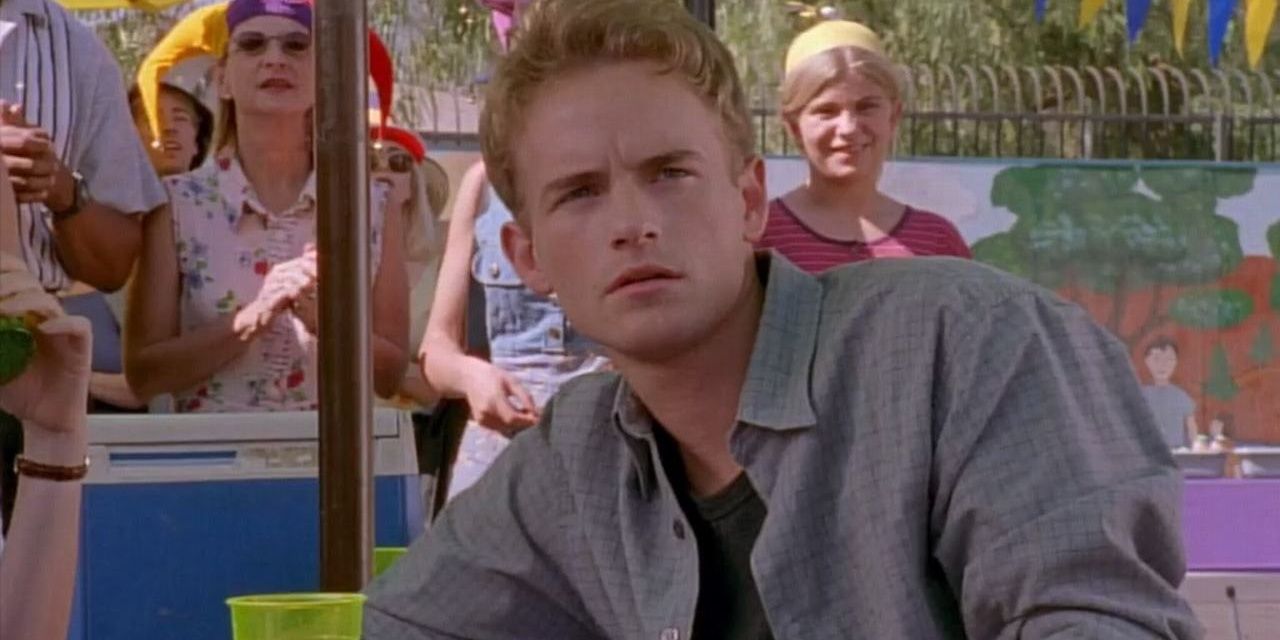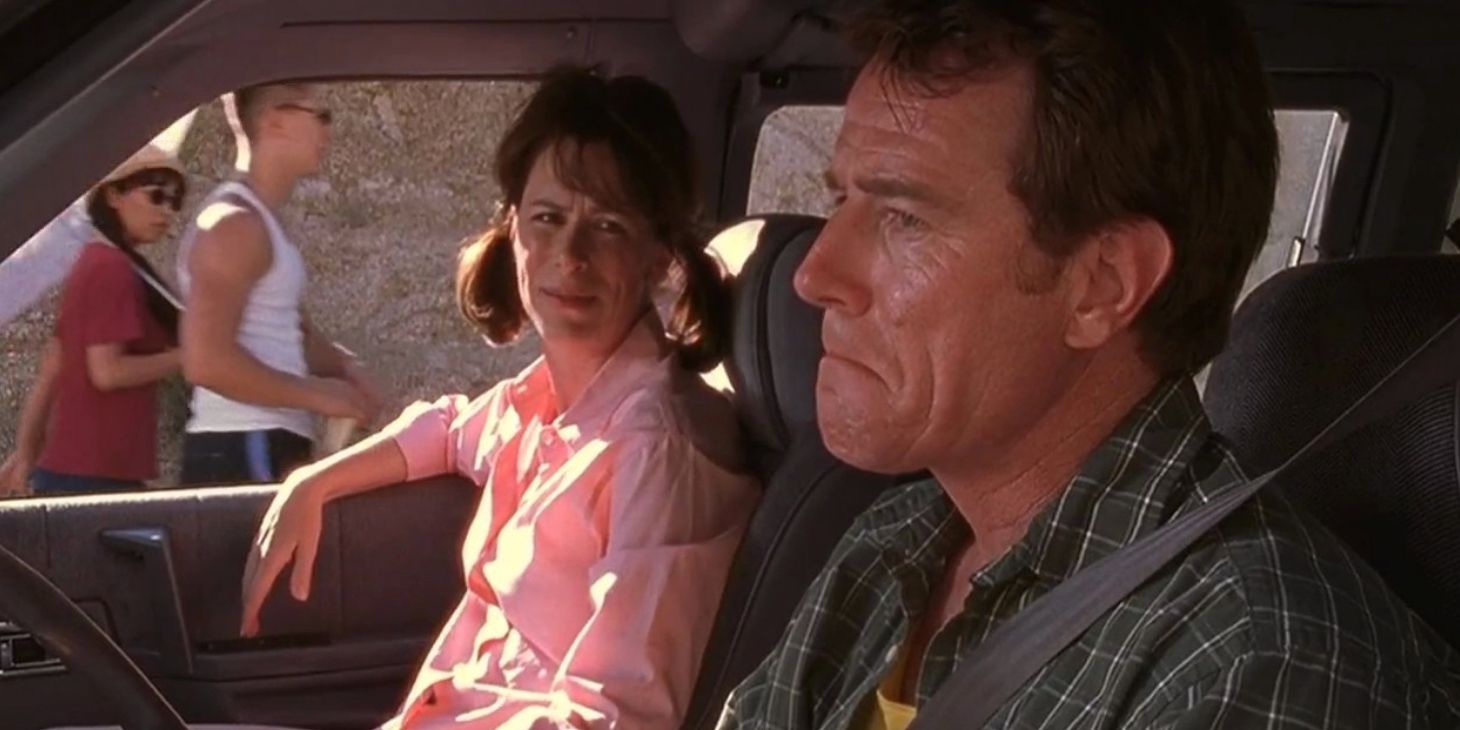.
comédia muito amada Malcolm no meio pode ter tido uma das famílias mais disfuncionais que já apareceu na televisão. Contada do ponto de vista de Malcolm na maioria de seus 150 episódios, a série seguiu quatro (e depois cinco) irmãos enquanto eles lutavam pelo domínio em sua casa suburbana. Na realidade, a mãe deles estava no controle de tudo.
Por sete temporadas, Lois Wilkerson fez o possível para planejar todos os aspectos da vida de seus filhos, mas não conseguiu planejar todos os melhores episódios. De acordo com o IMDb, esses episódios são classificados como os melhores da série. Variando de 8,2 a 9,2 em 10 estrelas, todas superaram a média de oito estrelas da série como um todo.
Piloto S1E01 – 8.2
O episódio piloto da série apresenta toda a família Wilkerson e se concentra em Malcolm, o filho do meio, enquanto ele narra todo o episódio – assim como fará no resto da série.
É revelado no primeiro episódio que Malcolm tem um QI de nível genial, então ele se mudou para uma classe especial, a classe Krelboyne, que está cheia de outras crianças geniais como ele. Malcolm tem dificuldade em se ajustar durante o piloto. A dificuldade de Malcolm em se encaixar e sua dificuldade em se encaixar em novas situações fornecem o plano para as desventuras de sua família ao longo de toda a série.
Burning Man S7E01 – 8.3
Este é um dos raros Malcolm no meio episódios que não apresentam inteiramente a família em direções diferentes. Em vez disso, toda a família está unida em seus esforços para participar do Burning Man, um festival em Nevada. Tudo começa quando Reese e Malcolm tentam escapar para ir sozinhos, mas seu discurso surpreendentemente comovente sobre criatividade e arte também deixa o resto da família interessado quando são pegos.
Embora cada membro de sua família tenha sua própria aventura ou, no caso de Dewey, seu próprio trabalho a fazer, no festival, suas histórias acabam se cruzando, pois todos encontram algo inesperado no festival. A maior parte da comédia pode vir das experiências de Dewey fazendo tarefas, mas o episódio ainda é divertido para os fãs.
Aniversário de Lois S2E03 – 8.3
Este episódio mostra o aniversário desastroso de Lois quando ela dá a cada uma das crianças US $ 10 para lhe dar um presente e, em vez disso, todos juntam para comprar outra coisa para si.
Seu marido, Hal, também esquece seu aniversário, o que obviamente torna as coisas ainda piores. Lois Wilkerson pode ser uma das mães mais fortes da TV, mas este episódio lembra ao público que ela também precisa de um tempo para si mesma. Ela escapa da família para desabafar nas gaiolas de rebatidas, mas a família faz o possível para compensá-la enquanto Francis traz para casa uma nova namorada.
Evacuação S2E24 – 8.3
Hal tenta levar o velho sofá da família para o lixão, mas acidentalmente o perde na viagem e causa um acidente de trem que afeta toda a cidade. Hal tenta fazer as pazes com todos sem sucesso no início, enquanto seus filhos se metem em problemas.
Dewey tenta fazer todos acreditarem que ele é órfão enquanto Reese inicia um sistema de mercado negro e Malcolm fica de castigo. Há também um enredo em que Francis sai em um encontro duplo único. Há muitas histórias separadas acontecendo neste episódio, mas, no final das contas, toda a família acaba junta, mantendo o público entretido.
Piquenique Krelboyne S1E08 – 8.3
Malcolm tem que ir a um piquenique para sua nova classe de gênios, e ele não quer se envergonhar quando tem que encenar com as outras crianças. O irmão mais velho, Francis, está em casa no fim de semana e concorda em ajudar Malcolm a sair dessa, até que ele conhece uma garota no piquenique e esquece o plano. Lois tenta se encaixar com os pais do outro garoto gênio e tem dificuldade enquanto Hal quebra a regra de não comer carne servindo um churrasco.
Alguns dos mais engraçados Malcolm no meio episódios envolvem sua vida familiar cruzando com sua vida escolar, e este não é exceção. Os mundos de Malcolm se chocam violentamente, e ele precisa encontrar uma maneira de superar isso.
Vestido Vermelho S1E02 – 8.4
Apenas o segundo episódio, “Red Dress” passou a ser o episódio mais assistido da primeira temporada quando foi ao ar. Não é um episódio perfeito, mas é um ótimo instantâneo do que o programa tinha reservado. Lois e Hal Wilkerson deveriam comemorar seu aniversário. Enquanto Hal espera no restaurante, Lois encontra seu vestido vermelho perfeito queimado no banheiro.
Tão certa de que um dos meninos fez isso, ela passa a noite inteira punindo-os em vez de ir jantar. De sua parte, Malcolm e Reese ligam para seu irmão mais velho, Francis, pedindo ajuda para lidar com ela. Claro, foi Hal quem acidentalmente estragou o vestido, embora ninguém descubra isso. A guerra entre Lois e seus filhos, enquanto Hal está alheio e Francis está em sua própria aventura, é um modelo para toda a série.
Reese se junta ao exército parte 2 S5E22 – 8.4
Reese Wilkerson é um dos maiores encrenqueiros do programa e mostra isso durante este episódio de duas partes, onde ele foge para se juntar ao exército depois que sua namorada o trai com seu irmão mais novo, Malcolm. O caos se instala quando Reese e sua equipe são capturados durante os exercícios de treinamento e a trama secundária continua.
A primeira parte viu Hal preso por possível atividade criminosa em seu trabalho e as evidências continuam se acumulando contra ele, pois este episódio mostra Hal em julgamento. Malcolm no meio não teve muitos episódios com várias partes. Em vez disso, a série conseguiu amarrar muitas de suas histórias mais ridículas em apenas cerca de 20 minutos, então os fãs estavam sempre curiosos para ver como as histórias mais longas se desenrolariam.
Se os meninos fossem meninas S4E10 – 8.5
Não seria uma sitcom sem um episódio de realização de desejo, não é? Aqui, é Lois quem imagina um novo mundo que os fãs assistem. Depois de uma ida estressante ao shopping com os filhos, Lois se pergunta como seria ter filhas.
O que ela imagina revela que suas filhas podem não ter sido fisicamente destrutivas, mas se tornaram ainda mais manipuladoras emocionalmente do que os meninos que ela está criando. É uma janela interessante para a imaginação de Lois, especialmente considerando que ela ainda espera ter uma filha no final do episódio.
Engarrafamento S2E01 – 8.5
No caminho para casa de um parque aquático, a família acaba presa em um enorme engarrafamento. Hal deixa um carro passar por eles, e esse carro acaba em um acidente que paralisa todo o tráfego. Como resultado do acidente, Lois passa o tempo gritando com os funcionários que tentam fazer seu trabalho, Hal enlouquece pensando que poderia ter sido o carro deles, Malcolm também se apaixona por uma garota presa no trânsito e Reese entra em guerra com um vendedor de sorvete.
Se tudo isso não bastasse para entreter o público, Dewey está em sua própria casa de aventura. Há tanto para manter o público rindo que não é surpreendente que seja classificado como um dos melhores episódios de Malcolm no meio.
Patins S1E13 – 8.6
Este episódio da primeira temporada inverteu um pouco da dinâmica usual. Embora Hal frequentemente não soubesse quais atividades os meninos faziam, desta vez ele foi o responsável por punir Malcolm. Cansado de correr durante os jogos de hóquei, Malcolm decide pedir ao pai que o ensine a patinar. Seu temperamento leva a melhor sobre ele durante as aulas, levando-o a gritar com Hal e usar um palavrão.
Lois não tem tempo para lidar com isso, apesar de Hal pedir ajuda, porque ela machucou as costas e Reese colocou remédios em suas bebidas para mantê-la calma. Hal finalmente surge com uma maneira criativa de fazer Malcolm entender suas ações – fazendo-o recitar insultos e palavrões diretamente para seu pai. O episódio é uma boa mudança da norma e demonstra que Hal não é tão infeliz, enquanto Malcolm consegue vencer Reese em um esporte.
Parque Aquático S1E16 – 8.6
A primeira temporada terminou com uma viagem em família. Lois, Hal, Reese e Malcolm foram a um parque aquático para um dia de diversão ao sol. Claro, porque é Malcolm no meio, o dia não sai como planejado. Hal e Lois só querem ser jovens e despreocupados novamente, então eles colocam algumas bebidas para adultos no parque, com a intenção de passar algum tempo longe das crianças.
Malcolm e Reese, no entanto, estragam isso tentando pregar peças um no outro. O ponto positivo do episódio pode ser a participação especial de Bea Arthur. Ela interpreta a babá de Dewey enquanto ele está em casa com uma infecção no ouvido. meninas de ouro os fãs adoraram vê-la de volta na TV.
Lois Contra-Ataca S7E16 – 8.6
Embora Lois geralmente gaste seu tempo tentando disciplinar seus filhos, na sétima temporada, uma surpreendente reviravolta nos acontecimentos a colocou do lado de pelo menos um deles.
Em “Lois Strikes Back”, Reese é alvo de uma pegadinha de várias garotas na escola. Quando Reese fica deprimido, Lois decide se vingar dele. Apenas Malcolm descobre que é ela quem torna a vida das meninas miserável e tenta impedi-la. É perturbador ver uma mãe de cinco filhos mexendo com adolescentes, mas talvez os fãs gostem tanto porque é um dos papéis anteriores de Emma Stone. Emma Stone ainda é uma estrela convidada que os fãs gostariam de ver em um Malcolm no meio série de avivamento.
Reunião de Família S4E03 – 8.7
Por mais infelizes que Lois normalmente deixe seus filhos, eles ainda são uma família. Em “Family Reunion”, o público consegue ver o que acontece quando os meninos decidem ficar do lado de Lois.
A família comparece a uma reunião do lado da família de Hal. Enquanto estava lá, Lois é tratada horrivelmente pelo pai de Hal e todos os outros. Eles não gostam dela porque ela não tem tanto dinheiro quanto eles – ou pelo menos, essa é a desculpa deles para ridicularizar Lois e mantê-la fora da foto de família. Seus filhos se unem para aterrorizar os adultos reunidos na reunião em vingança. É ótimo ver a equipe Wilkersons porque é muito raro na série.
Graduação S7E22 – 9.0
O final da série mantém todos os tropos de Malcolm no meio no lugar. À medida que Malcolm e Reese se formam no ensino médio, eles passam por mudanças na vida, mas quanto mais as coisas mudam, mais elas permanecem as mesmas. Tanto Reese quanto Francis encontram novos caminhos na vida, mas os mantêm longe de Lois, para que possam buscar sua felicidade sem interferência.
É uma lição que Malcolm provavelmente deveria ter aprendido com este episódio. Ele teria recebido uma oferta para o emprego dos seus sonhos, mas sua mãe recusa em seu nome, deixando-o para fazer a faculdade porque a família não pode pagar por isso. Como sempre, Lois encontra uma maneira de tornar a vida de Malcolm mais difícil. Além disso, como sempre, Malcolm encontra uma maneira de continuar apesar dela.
Boliche S2E20 – 9.2
O melhor episódio de Malcolm no meio vem desde o início da corrida. Perto do final da segunda temporada, os roteiristas assumiram um risco criativo com um episódio que os fãs claramente adoraram.
“Bowling” mostra Malcolm e Reese jogando boliche em um estilo portas de correr configurar. O público pode ver o que aconteceria se Lois os pegasse, mas também o que aconteceria se Hal os pegasse. O episódio destaca incrivelmente bem seus diferentes estilos parentais e demonstra que não importa o que aconteça, Malcolm e Reese nunca conseguem exatamente o que desejam.
.
























